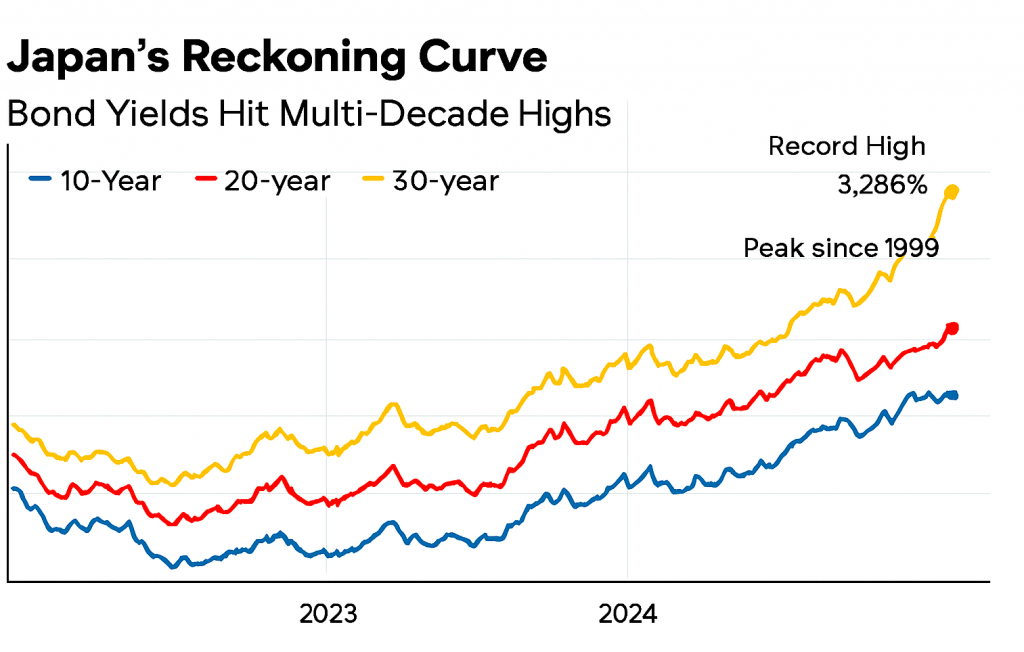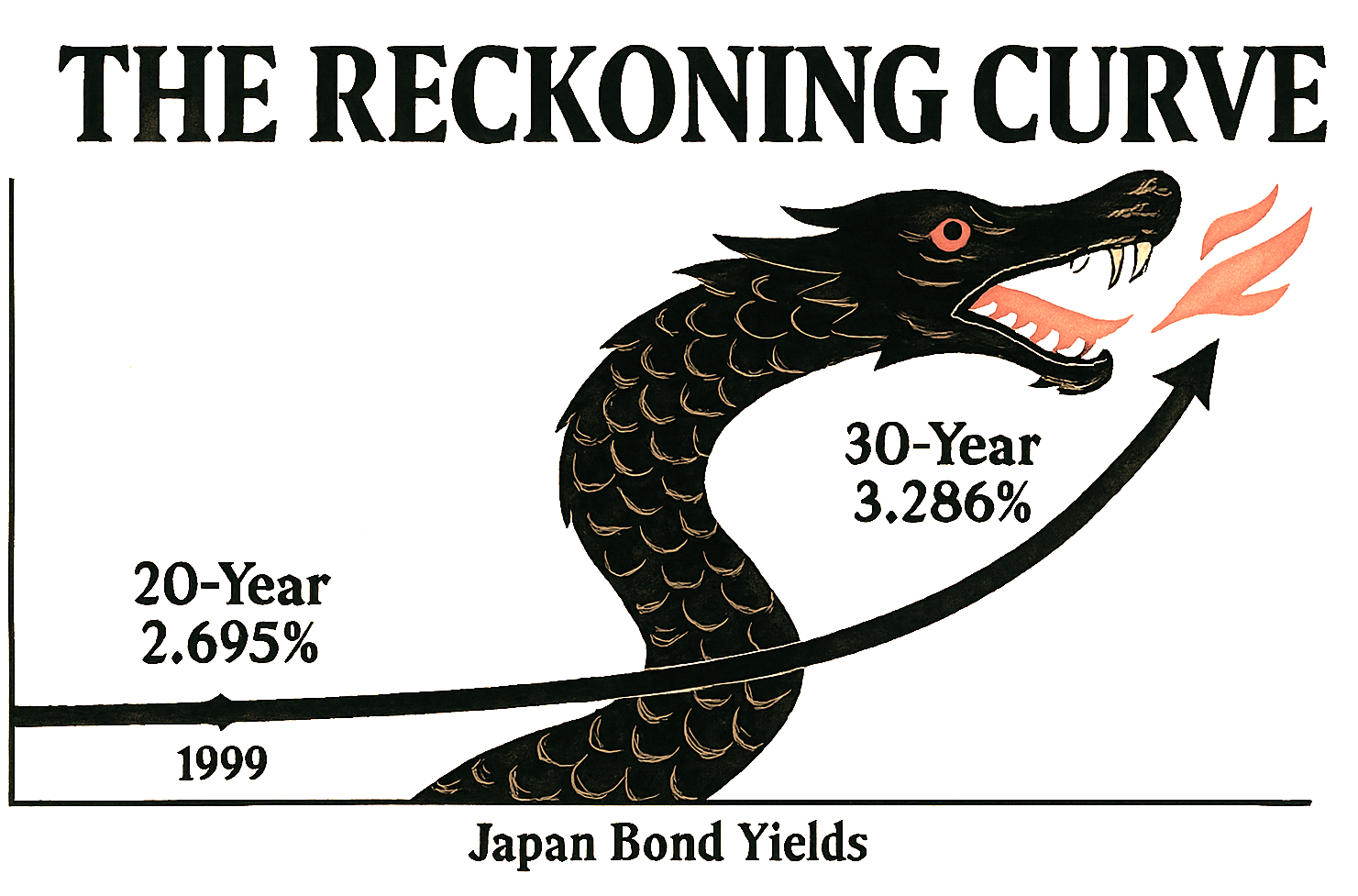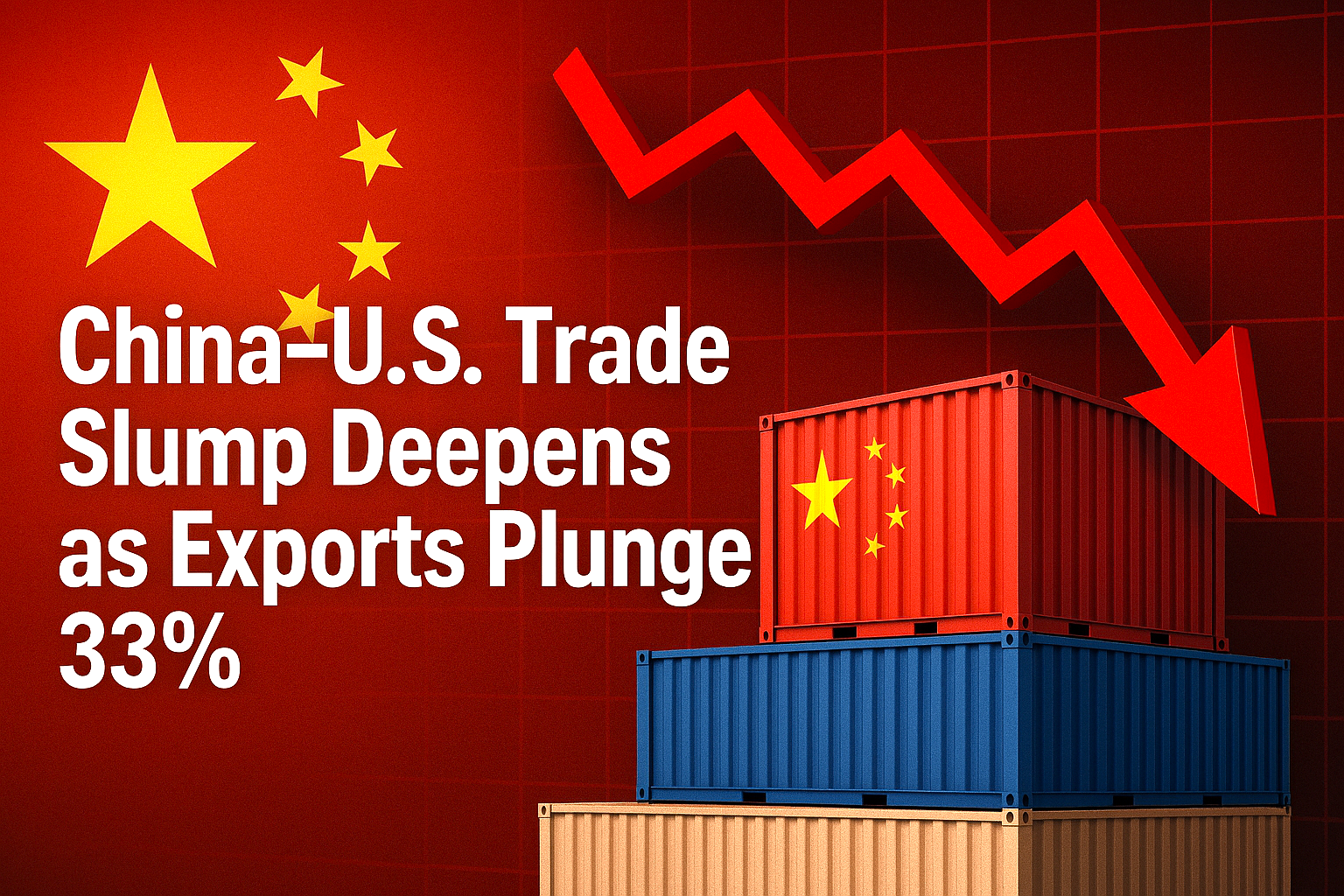After decades of economic sedation, Japan’s long-term bond yields are rising with a vengeance.
The 30-year government bond has breached 3.286%—its highest level on record—while the 20-year yield has climbed to 2.695%, a peak not seen since 1999.
These aren’t just numbers; they’re seismic signals of a nation confronting its delayed past, now its deferred future.

For years, Japan’s yield curve was a monument to inertia. Negative interest rates, yield curve control, and relentless bond-buying by the Bank of Japan created an artificial calm—a kind of economic Zen garden, raked smooth but eerily still.
That era is ending. Inflation has persisted above target for three years, and the BOJ’s retreat from monetary intervention has unleashed market forces long held at bay.
This steepening curve is more than financial recalibration—it’s a symbolic reckoning. Rising yields demand accountability: from policymakers who masked structural fragility, from investors who chased safety in stagnation, and from a society that postponed hard choices on demographics, debt, and productivity.
The bond market, once a passive witness, now acts as judge. Each basis point is a moral verdict on Japan’s economic past.
The shadows of the Lost Decades—deflation, aging populations, and overspending—are being dispelled not by command, but through the process of price discovery.
In this new era, Japan’s yield curve resembles a serpent uncoiling—no longer dormant but rising with intent.
The question isn’t whether the curve will flatten again, but whether Japan can meet the moment it has long delayed.



